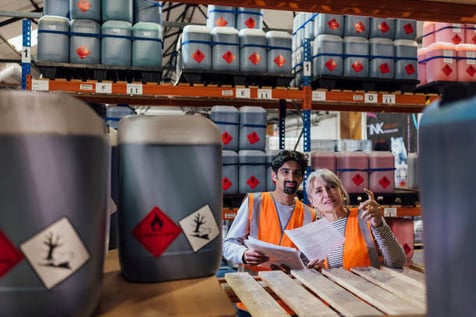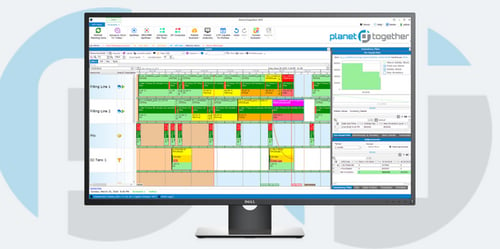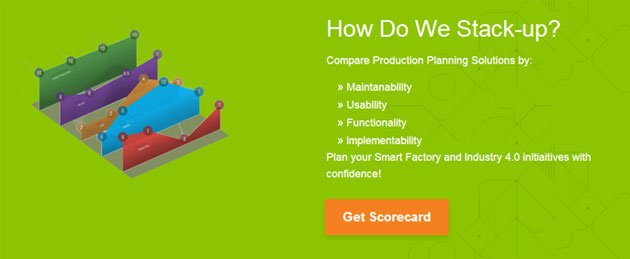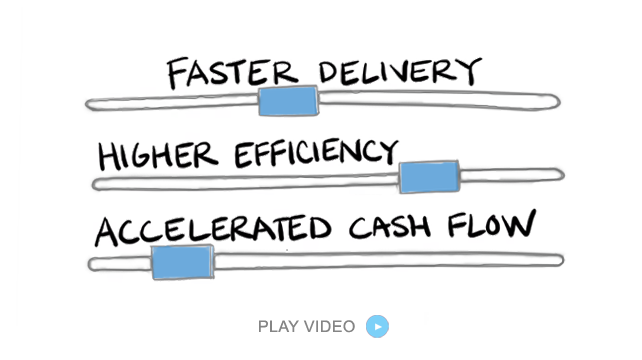Demand Bundling: A Strategic Approach for Chemical Manufacturing Purchasing Managers
Did you know that companies in the chemical manufacturing industry can reduce procurement costs by up to 15% through effective demand bundling? This powerful strategy is gaining traction as businesses seek new ways to optimize costs.
In chemical manufacturing industry, cost optimization remains a critical concern for Purchasing Managers. One effective yet often overlooked strategy for achieving significant cost savings is demand bundling. This practice involves consolidating purchasing requirements across different departments, plants, or product lines to gain better leverage with suppliers, streamline procurement processes, and reduce overall costs.
When combined with advanced planning and scheduling tools like PlanetTogether and integrated with Enterprise Resource Planning (ERP) systems such as SAP, Oracle, Microsoft Dynamics, Kinaxis, or Aveva, demand bundling becomes not just a tactical initiative but a strategic advantage.
In this blog, we will explore the concept of demand bundling, its benefits, and how its integration with advanced software solutions can unlock cost savings in chemical manufacturing.

Understanding Demand Bundling
Demand bundling refers to the practice of aggregating similar types of materials, services, or products into larger purchase orders. In chemical manufacturing, this can involve raw materials like solvents, catalysts, or specialty chemicals. By consolidating orders across various departments or production facilities, companies can achieve greater economies of scale, negotiate better terms with suppliers, and streamline logistics.
This strategy is particularly relevant in the chemical industry due to the high costs of raw materials and the complexities involved in their transportation and storage. Demand bundling helps purchasing managers avoid fragmented purchases that often result in higher prices, increased administrative workload, and reduced negotiating power.

Benefits of Demand Bundling
To illustrate these benefits, here are some real-world examples:
Cost Savings Through Volume Discounts
Suppliers often offer discounts for larger order quantities. By consolidating smaller, individual orders into a single, larger purchase, companies can negotiate better rates. This cost reduction directly impacts the cost of goods sold (COGS), improving overall profitability.
Example:
A chemical manufacturing company consolidated its orders for solvents across three plants, resulting in a 15% discount from suppliers due to larger, more consistent orders.
Reduced Administrative Costs
Processing multiple small orders requires significant administrative effort, including purchase order creation, invoice management, and supplier communication. Bundling reduces the number of transactions, thereby lowering administrative overhead.
Example:
A mid-sized chemical producer reduced purchase order processing time by 30% by bundling demand and automating workflows with PlanetTogether integrated with SAP.
Improved Supplier Relationships
Larger, consistent orders enhance a company's attractiveness as a client, potentially leading to better service, preferential treatment during shortages, and more favorable contract terms.
Example:
A specialty chemical company secured priority access to raw materials during a supply crunch after demonstrating its commitment through larger, bundled orders.
Enhanced Supply Chain Efficiency
Bundling orders simplifies transportation and logistics planning, resulting in fewer shipments, optimized delivery schedules, and reduced transportation costs.
Example:
A firm manufacturing industrial chemicals decreased transportation costs by 20% by optimizing delivery schedules with bundled shipments.
Better Forecasting and Inventory Management
Aggregating demand provides a clearer picture of material requirements across the organization. This visibility improves forecasting accuracy and inventory management, reducing the risk of stockouts or excess inventory.
Example:
A pharmaceutical chemical supplier improved forecasting accuracy by 25% after integrating PlanetTogether with Kinaxis, allowing more strategic bulk purchases.
Challenges and Solutions
While demand bundling offers substantial benefits, it also presents challenges such as cross-departmental coordination, data silos, and supplier constraints. Overcoming these hurdles requires robust tools and systems that can centralize information, facilitate collaboration, and automate processes.
This is where the integration of PlanetTogether with leading ERP systems like SAP, Oracle, Microsoft Dynamics, Kinaxis, or Aveva becomes invaluable.

The Role of PlanetTogether and ERP Integration in Demand Bundling
PlanetTogether Advanced Planning and Scheduling (APS) software, when integrated with ERP platforms, provides a unified, real-time view of material requirements, production schedules, and procurement needs. This integration empowers purchasing managers to implement demand bundling more effectively by:
Centralizing Data Across Facilities
PlanetTogether consolidates material requirements from multiple plants, enabling a holistic view of demand.
Automating Demand Aggregation
The software can automatically identify opportunities for bundling by analyzing procurement patterns, production schedules, and material usage across the organization.
Improving Forecasting Accuracy
Integrated with ERP systems, PlanetTogether leverages historical data and predictive analytics to forecast future demand more accurately.
Enhancing Supplier Collaboration
By providing suppliers with consolidated order forecasts, companies can negotiate better terms and ensure more reliable delivery schedules.
Streamlining Procurement Workflows
The seamless integration between PlanetTogether and ERP platforms like SAP or Oracle reduces manual data entry, minimizes errors, and accelerates the procurement process.

Best Practices for Implementing Demand Bundling
Establish Cross-Functional Collaboration
Demand bundling requires cooperation across departments, including production, procurement, and logistics. Regular cross-departmental meetings and clear communication channels are essential.
Leverage Technology for Data Integration
Ensure seamless integration between PlanetTogether and your ERP system to centralize data and automate processes.
Identify High-Impact Materials
Start with materials that offer the most significant cost-saving potential, such as high-volume or high-cost items.
Monitor Supplier Performance
Regularly evaluate supplier performance to ensure that bundled orders meet quality, delivery, and cost expectations.
Continuously Analyze and Optimize
Use analytics tools within PlanetTogether to monitor the impact of demand bundling and identify new opportunities for optimization.
Demand bundling will become even more critical due to increasing raw material costs, supply chain disruptions, and the growing emphasis on sustainability. Advanced tools like PlanetTogether, integrated with ERP systems such as SAP, Oracle, Microsoft Dynamics, Kinaxis, or Aveva, will play a pivotal role in enabling companies to adapt to these changes.
By embracing demand bundling and leveraging integrated software solutions, purchasing managers can achieve substantial cost savings, improve operational efficiency, and build more resilient supply chains. The time to act is now— Are you ready to take your manufacturing operations to the next level? Contact us today to learn more about how PlanetTogether can help you achieve your goals and drive success in your industry.
Topics: PlanetTogether Software, Integrating PlanetTogether, Chemical Manufacturing, Improved Supplier Relationships, Centralizing Data Across Facilities, Streamlining Procurement Workflows, Automating Demand Aggregation, Administrative Efficiency, Improving Forecasting Accuracy





















LEAVE A COMMENT